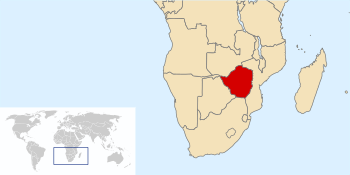Southern Rhodesia facts for kids
Quick facts for kids
Southern Rhodesia
|
|||||||||||||||||
|---|---|---|---|---|---|---|---|---|---|---|---|---|---|---|---|---|---|
| 1923–1953 1963–1965 1979–1980 |
|||||||||||||||||
|
|
|||||||||||||||||
|
Anthem: God Save the Queen
|
|||||||||||||||||

Location of Southern Rhodesia in southern Africa.
|
|||||||||||||||||
| Status | Self-governing British colony | ||||||||||||||||
| Capital | Salisbury | ||||||||||||||||
| Common languages | English (official) Shona and Sindebele widely spoken, some Afrikaans |
||||||||||||||||
| Government | Self-governing Crown colony | ||||||||||||||||
| Governor | |||||||||||||||||
|
• 1923–1928
|
Sir John Robert Chancellor | ||||||||||||||||
|
• 1959–1969b
|
Sir Humphrey Gibbs | ||||||||||||||||
|
• 1979–1980
|
Lord Soames | ||||||||||||||||
| Premier / Prime Minister | |||||||||||||||||
|
• 1923–1927
|
Sir Charles Coghlan | ||||||||||||||||
|
• 1933–1953
|
Sir Godfrey Huggins | ||||||||||||||||
|
• 1964–1979
|
Ian Smith | ||||||||||||||||
| History | |||||||||||||||||
| 1889 | |||||||||||||||||
|
• Self-governing colony
|
1 October 1923 | ||||||||||||||||
|
• Federation
|
1953–1963 | ||||||||||||||||
|
• UDI
|
11 November 1965 | ||||||||||||||||
| 3 March 1970 | |||||||||||||||||
| 1 June 1979 | |||||||||||||||||
| 17 April 1980 | |||||||||||||||||
| Area | |||||||||||||||||
| 1904 | 372,518 km2 (143,830 sq mi) | ||||||||||||||||
| Population | |||||||||||||||||
|
• 1904
|
605764 | ||||||||||||||||
| Currency | Southern Rhodesian pound Rhodesian pound Rhodesian dollar |
||||||||||||||||
|
|||||||||||||||||
|
|||||||||||||||||
Southern Rhodesia was a British colony in southern Africa. It was a "self-governing" colony, which meant it had some control over its own affairs. This area is now known as Zimbabwe. Southern Rhodesia existed at different times in the 1900s. It was located between the Limpopo River in the south and the Zambezi River in the north.
Contents
What Was Southern Rhodesia?
Southern Rhodesia was a territory controlled by the United Kingdom. It was named after Cecil Rhodes. He was a British businessman who played a big role in colonizing this part of Africa. The colony was officially formed in 1923. Before that, it was managed by a company called the British South Africa Company.
Becoming a Self-Governing Colony
In 1923, Southern Rhodesia became a self-governing colony. This meant it could make many of its own laws. However, it was still part of the British Empire. The British government still had some power over important matters. These included things like foreign policy and defense.
Important Leaders
The colony had a Governor who represented the British King or Queen. It also had a Premier (later called Prime Minister). This leader was in charge of the local government. Sir Charles Coghlan was the first Premier. Sir Godfrey Huggins served for a very long time.
Changes Over Time
Southern Rhodesia's history had several important changes.
The Federation (1953–1963)
From 1953 to 1963, Southern Rhodesia was part of a larger group. This group was called the Federation of Rhodesia and Nyasaland. It also included Northern Rhodesia (now Zambia) and Nyasaland (now Malawi). The Federation was created to bring these territories together. However, it eventually broke apart.
Unilateral Declaration of Independence (1965)
After the Federation ended, Southern Rhodesia faced new challenges. In 1965, the government, led by Prime Minister Ian Smith, made a big decision. They declared independence from Britain on their own. This was called a Unilateral Declaration of Independence (UDI). Britain and most other countries did not recognize this independence.
Becoming Zimbabwe
The UDI led to a long period of conflict. This conflict was known as the Rhodesian Bush War. It was fought between the government and nationalist groups. In 1979, a new country called Zimbabwe Rhodesia was formed. This was a step towards a more inclusive government. Finally, in 1980, the country gained full independence. It was renamed Zimbabwe. This marked the end of Southern Rhodesia.
Images for kids
-
Cecil Rhodes (1853–1902), who helped establish the colony.
-
A postage stamp from 1947, showing the King's visit.
See also
 In Spanish: Rodesia del Sur para niños
In Spanish: Rodesia del Sur para niños







